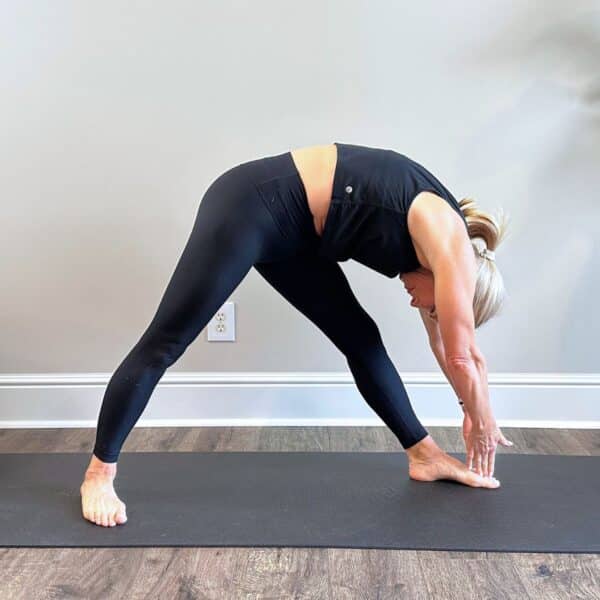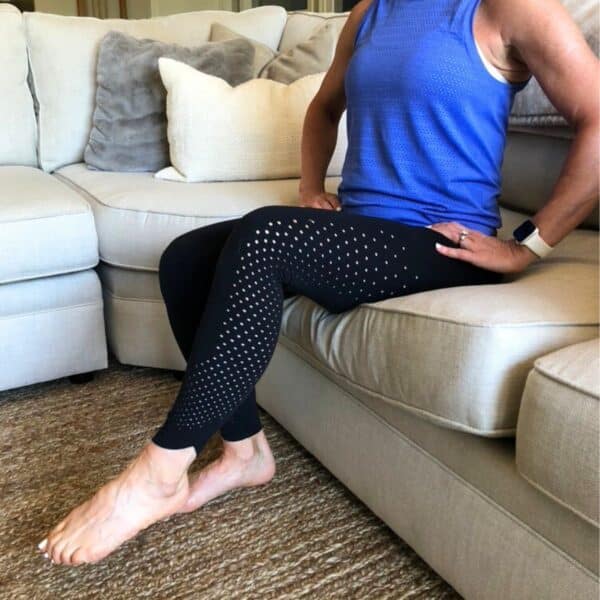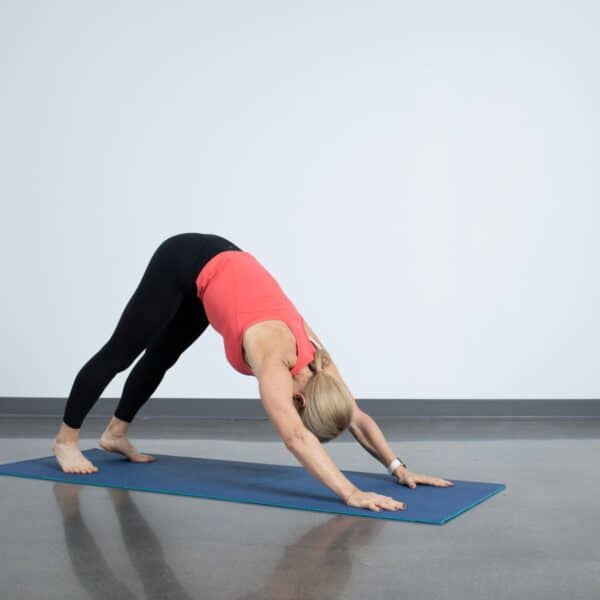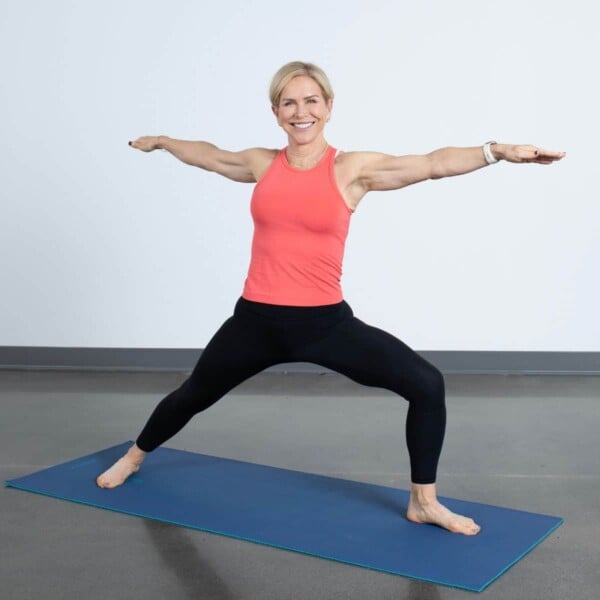This post contains affiliate links. Please see our disclosure policy.
Savasana, also known as “corpse pose”, is a pose of relaxation and meditation. Savasana is the perfect ending to a yoga practice or the perfect position to use for practicing quiet time and meditation. It puts the body at complete rest and allows you to open yourself up for deeper breathing and a slower heart rate.
Use the links below to quickly navigate this guide:
- How To Do Savasana
- Is it Shavasna or Savasana?
- What Muscles Does Savasana Work?
- Benefits of Savasana
- Incorporating Savasana Into Your Workouts
- Other Exercises Similar To Savasana
How To Do Savasana
Here are the steps to performing Savasana:
- Lay on your back with legs long, feet hip width apart and arms relaxed by your side with palms up.
- Let your feet fall into their natural position either outward or inward.
- Relax your hand and let your fingers curl naturally.
- Focus on your breath as you relax each and every part of your body.
A few tips for proper positioning in corpse pose: if your neck feels out of alignment, be sure to prop your head with a small pillow or roll up a towel to put under your neck for support. If it puts strain on your low back to lie flat, bend your knees and place your feet on the floor, or pull the soles of your feet together letting the knees open to the side in a frog-like position. If lying on your back doesn’t work for you, modify in a fetal position by lying on your side with knees bent and one arm resting under your head.
Is it Savasana or Shavasana?
You may have heard it pronounced Savasana or Shavasana. This is because the word is not derived from English so if you want to know the true pronunciation, it’s here: Sanskrit: शवासन; IAST: śavāsana. But if you’re not a native Sanskrit speaker like us, here’s a little help:
- Pronunciation: sha-VAH-suh-nuh
For more on this, check out this origination/pronunciation guide.
What Muscles Does Savasana Work?
Savasana isn’t meant to be a strengthening exercise, but rather more of a full body stretch and relaxation pose. That being said, instead of “working” your muscles” you are allowing them all to rest and become calm.
Benefits of Savasana
The biggest benefit to corpse pose is allowing the body to become still, to rest and to re-connect with your breath and body. Our lives are often to busy and even exercise, an important piece of health, requires a large amount of stress to our body. Savasana brings about recovery and recognizes the importance of allowing our body to heal and rest.
Savasana can be used not only as a great way to rest your body, but also as a wonderful way to relax your mind. By focusing on your breathing, you can use corpse pose as a form of meditation. According to Mayo Clinic, relaxation and meditation have been shown to help people manage symptoms of conditions such as:
- Anxiety disorders
- Asthma
- Cancer
- Depression
- Heart disease
- High blood pressure
- Pain
- Sleep problems
Incorporating Corpse Pose Into Your Workouts
Savasana is traditionally practiced at the end of a yoga practice, but the benefits can be used at any time of day. In the morning you can start the day with Savasana to put your mindset into a calm place and to prepare you to take on the hustle and challenges of a new day. In the afternoon, corpse pose can be used to break up the cycle of a stressful, busy day to slow your heart rate and give you a few moments to regroup. Before bed, Savasana can calm you and prepare you more thoroughly for a restful night’s sleep.
Other Exercises Similar to Savasana
These exercises are similar to Savasana in that they give your body a chance to stretch and recover. Building strength is not the purpose of these poses, but rather gaining flexibility, promoting recovery and rest.







